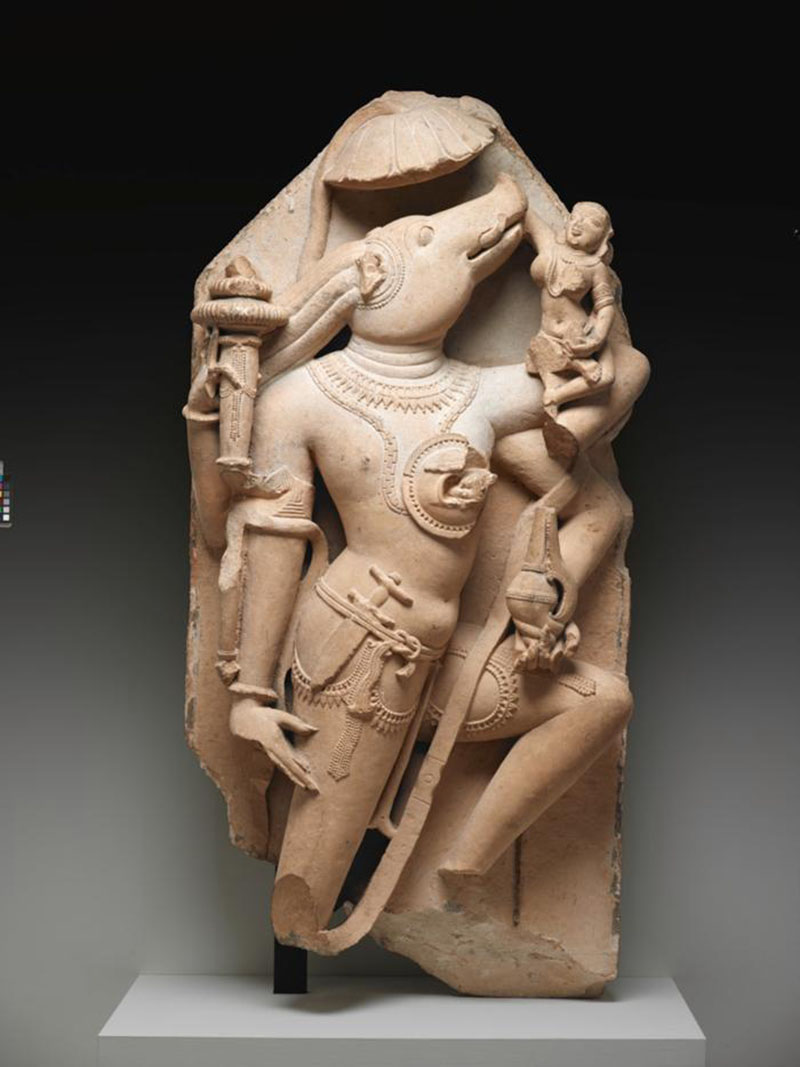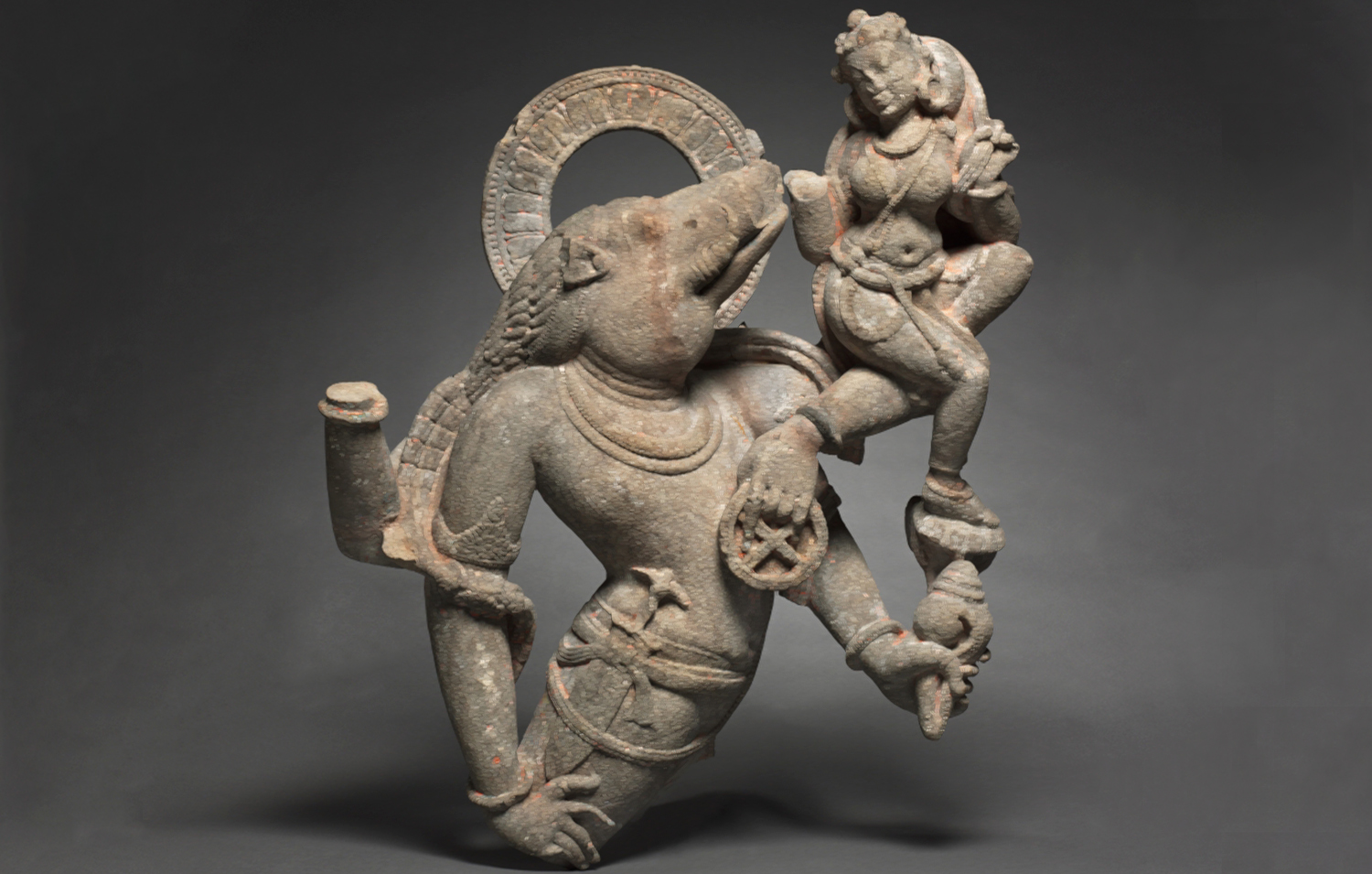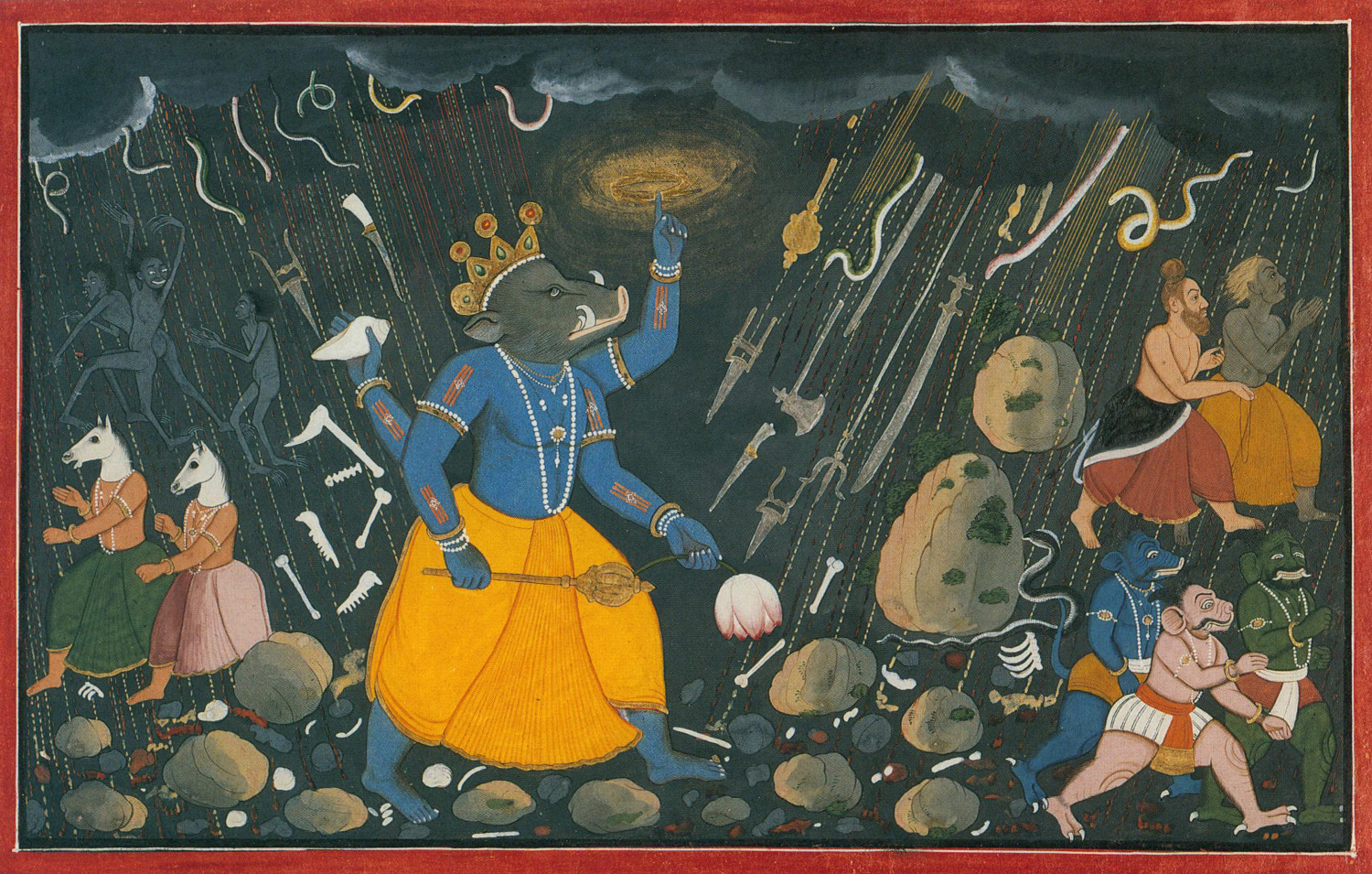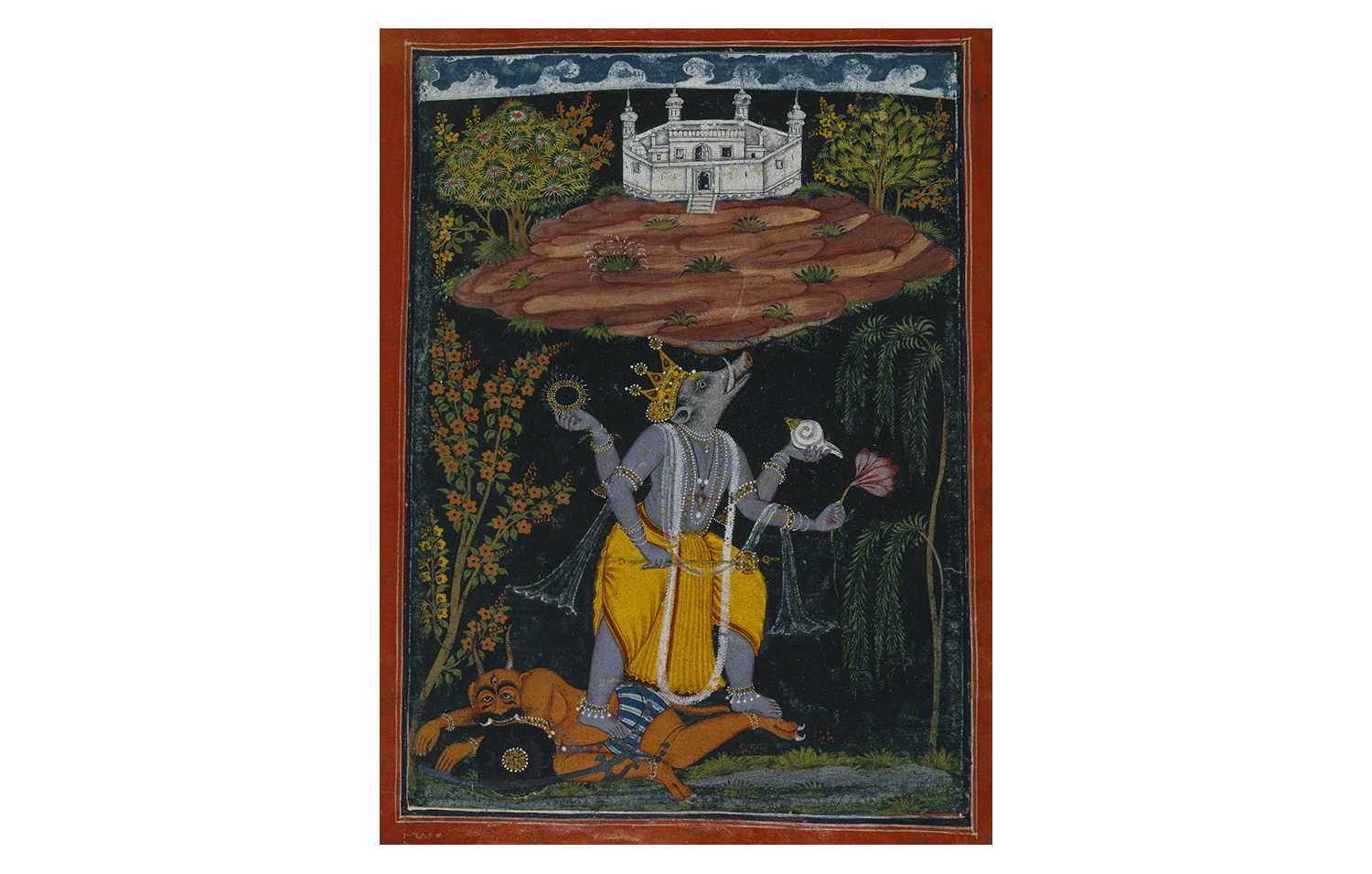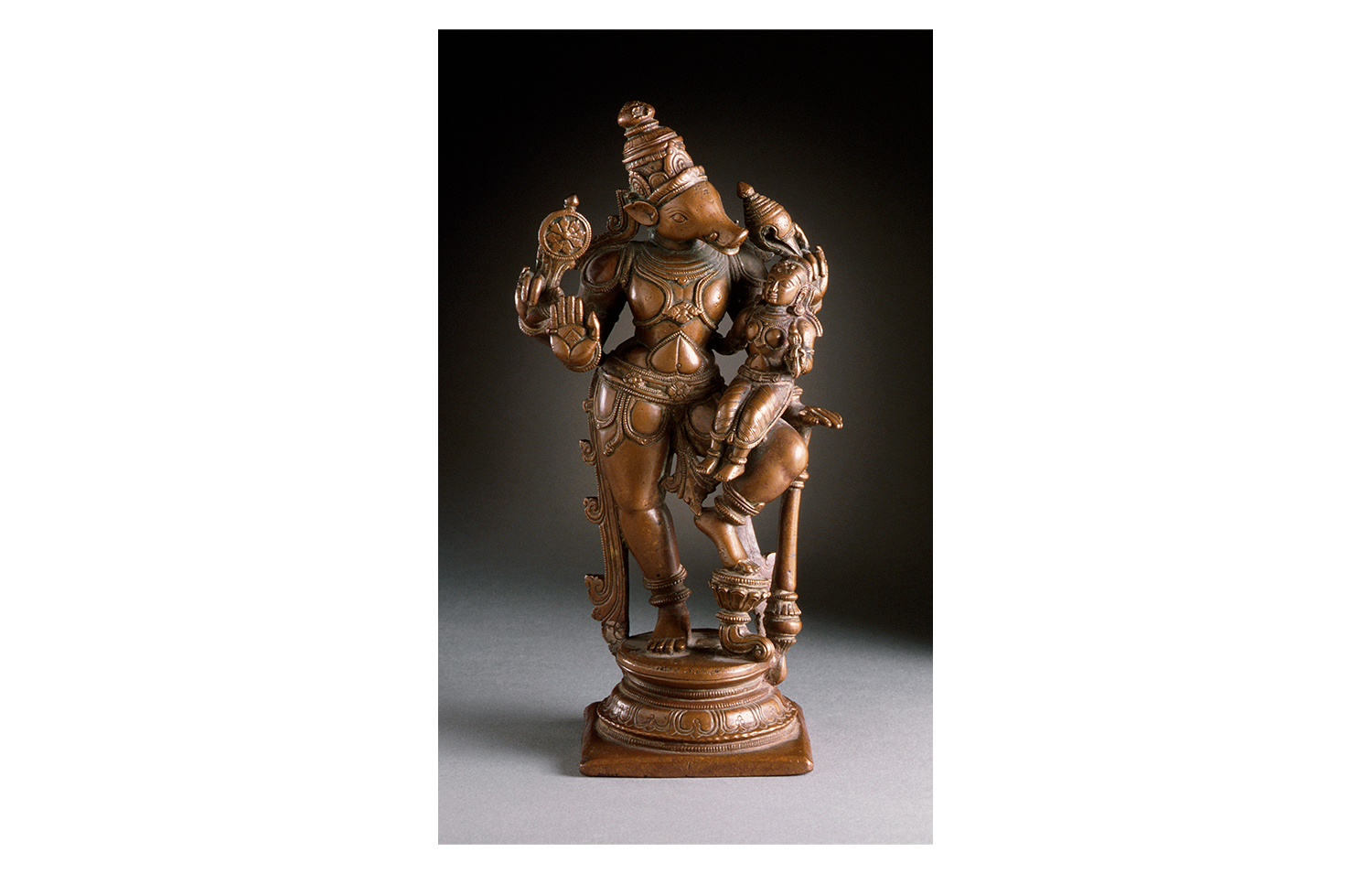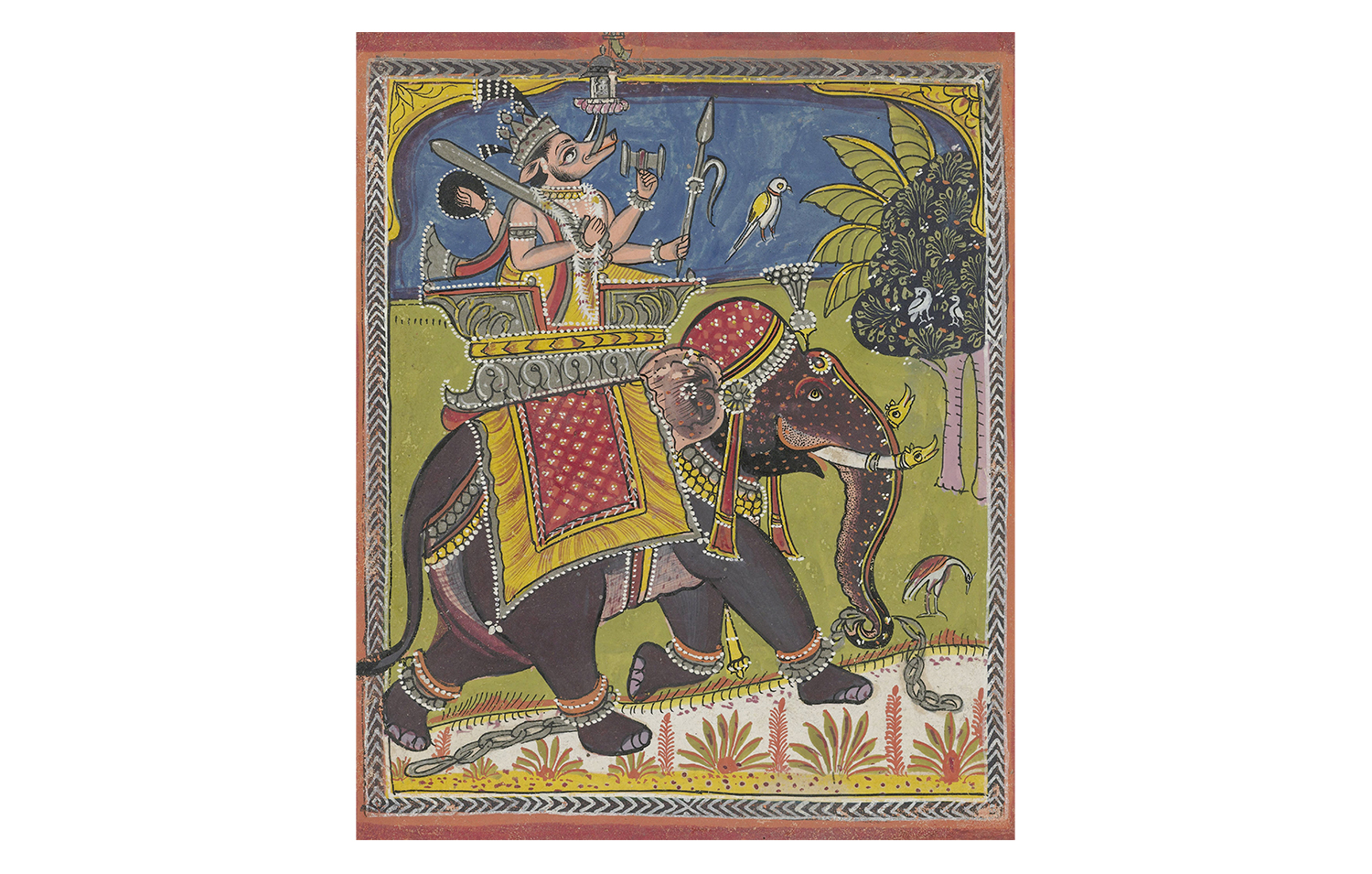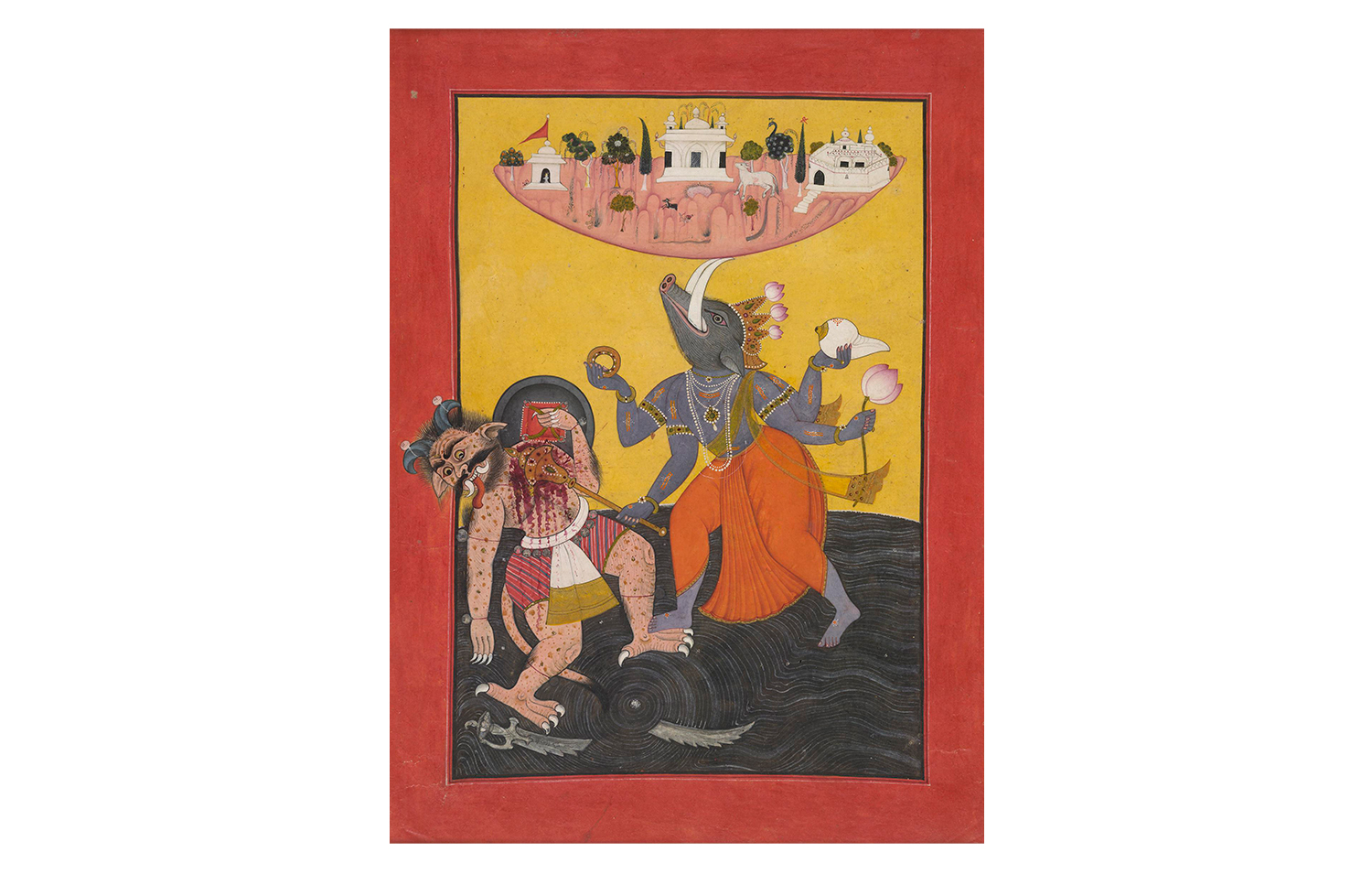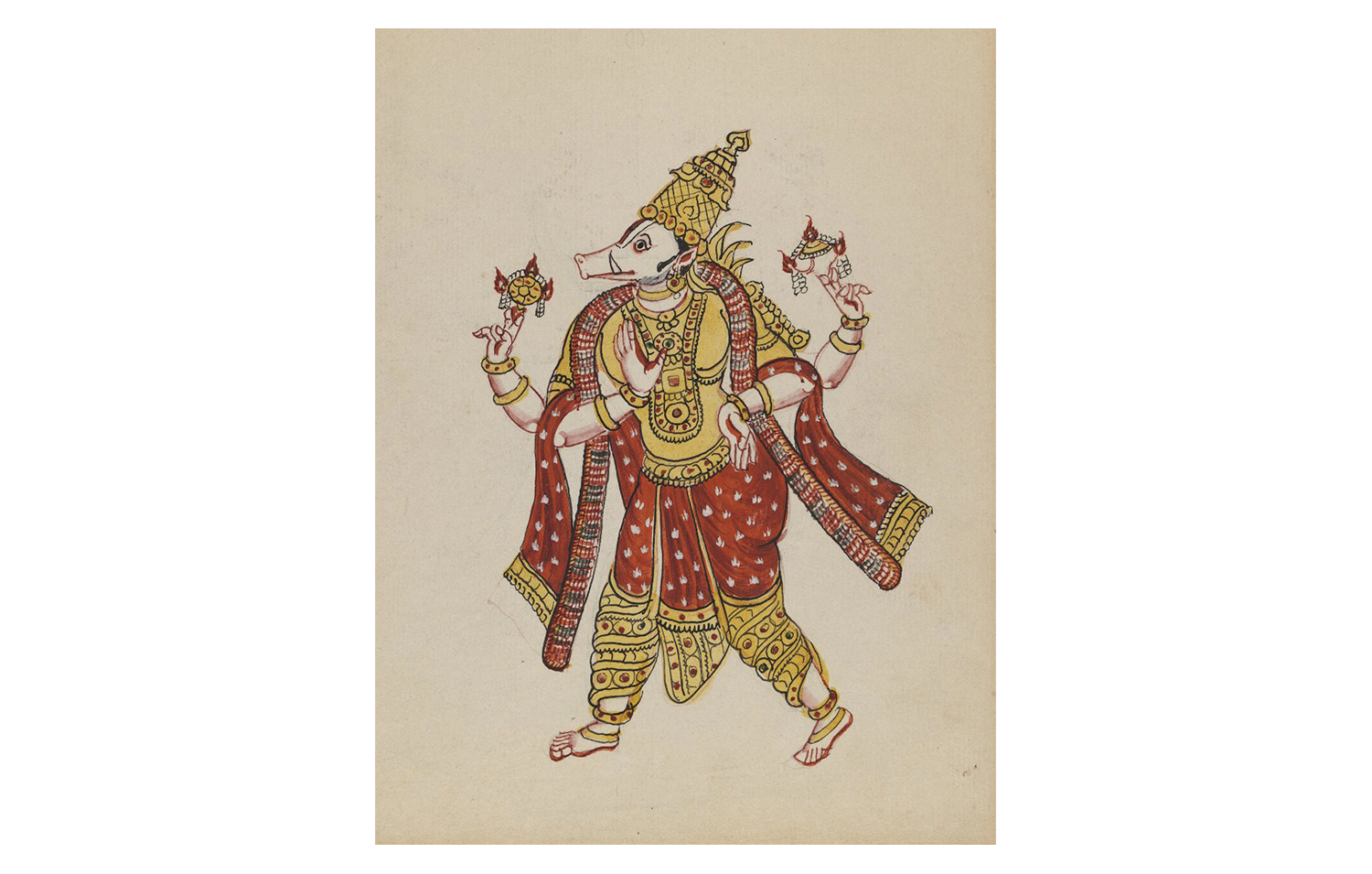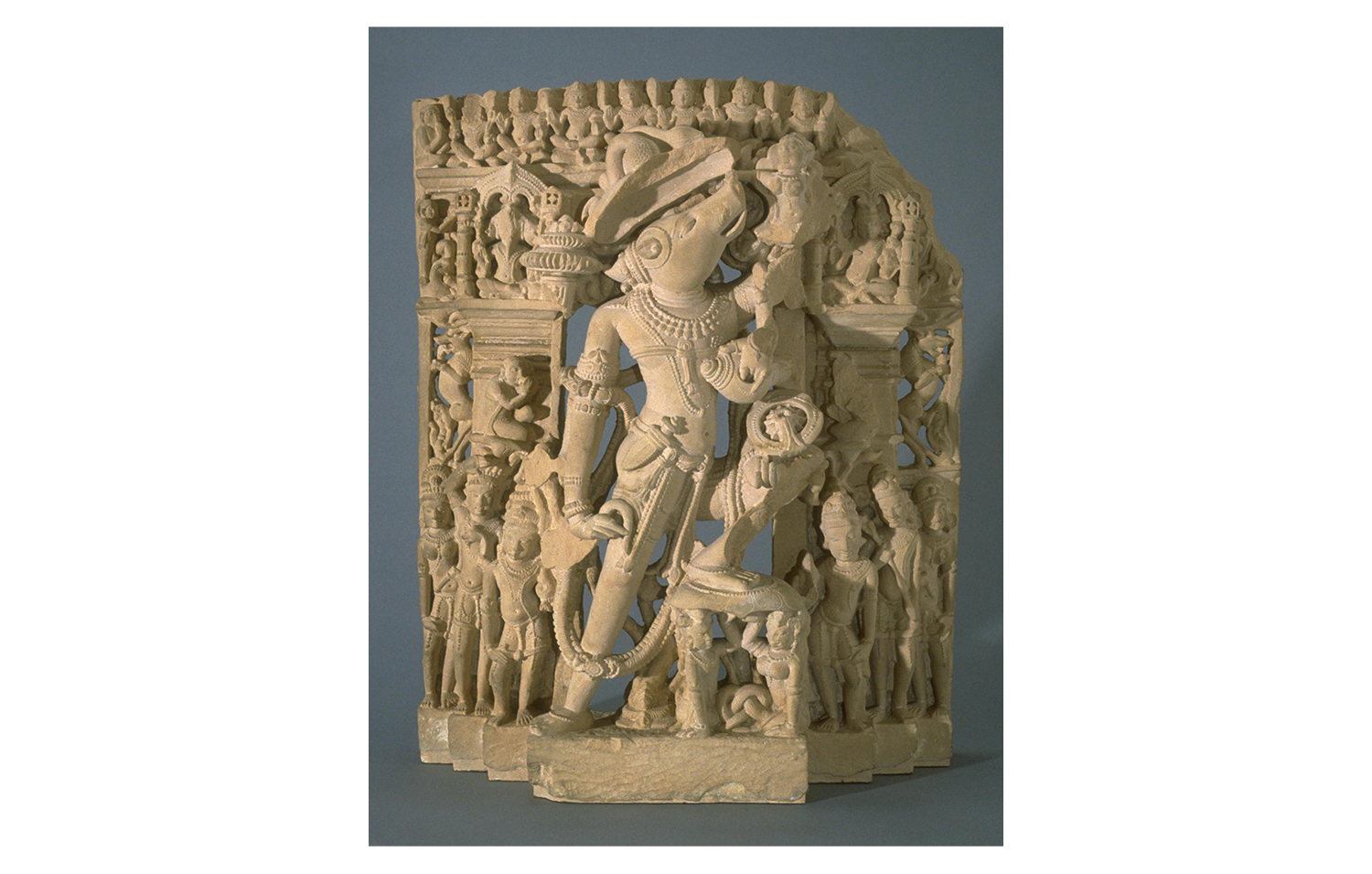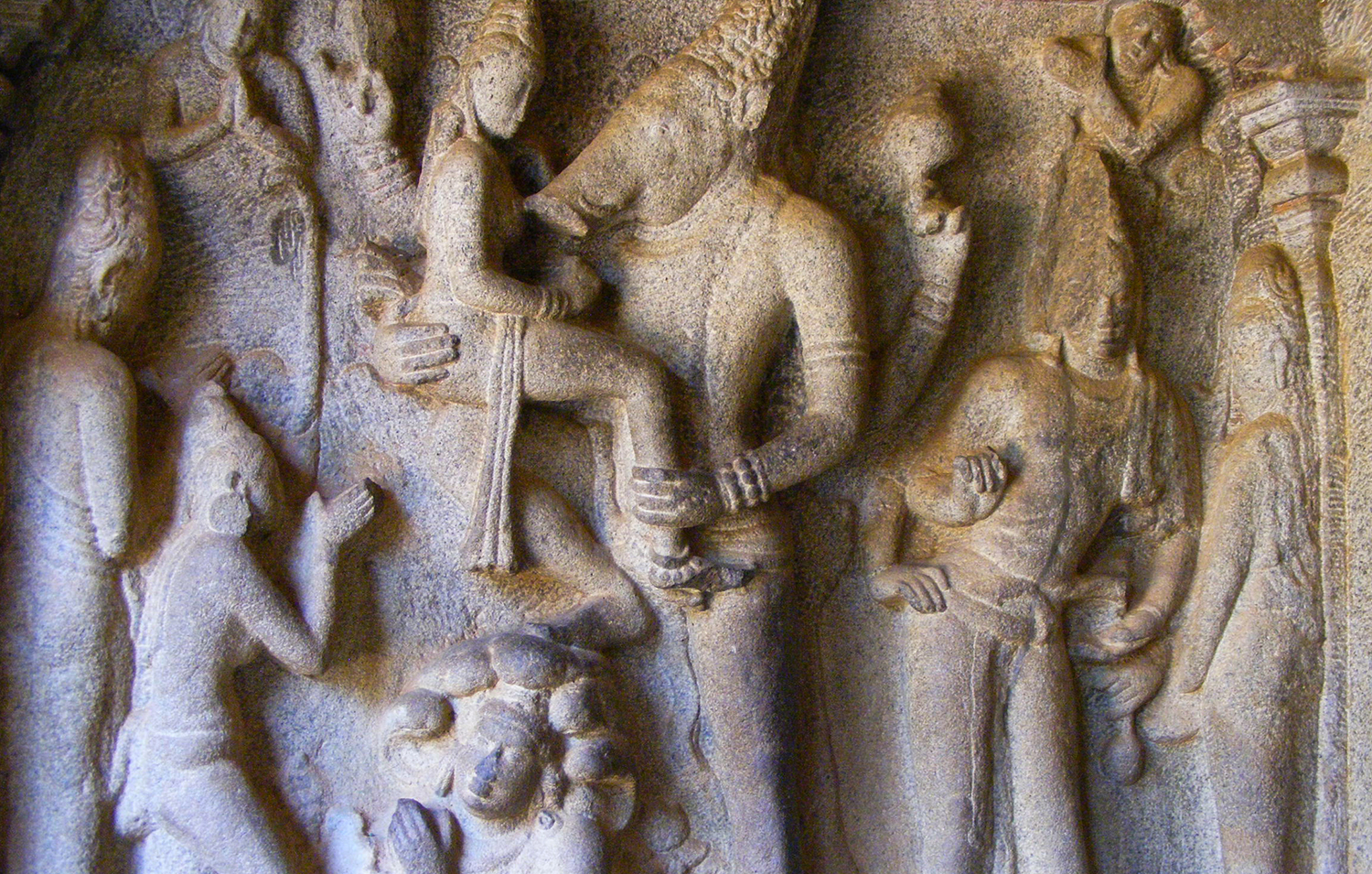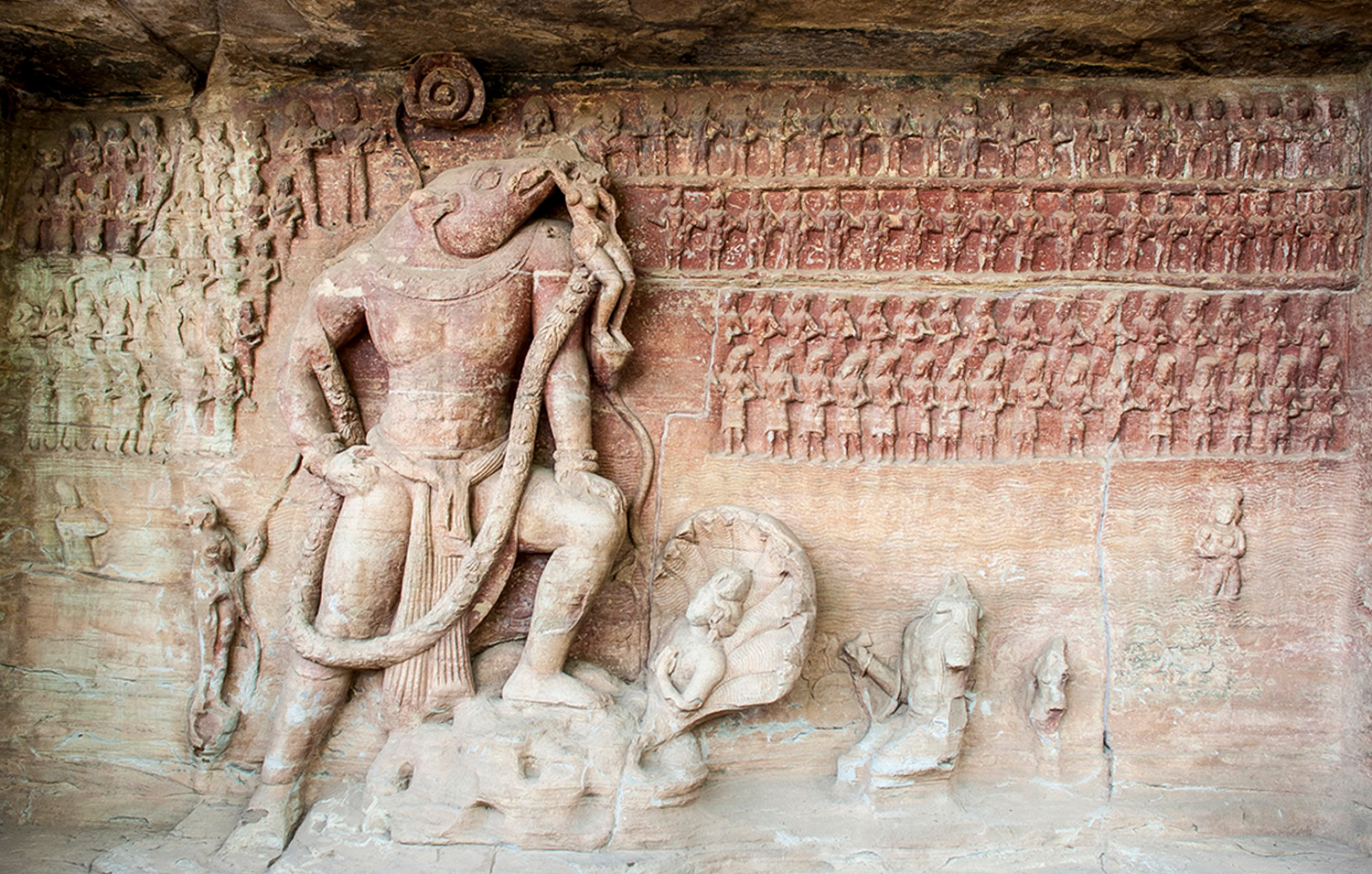ARTICLE
Varaha
Between the first and seventh centuries CE, images of Varaha spread across the Indian subcontinent. Some of the earliest depictions of Varaha have been found in Mathura and date to the first and second centuries CE. Other early sculptures of Varaha can be found at the cave temples in Badami; the Varaha Cave Temple in Mamallapuram; and the Ellora Caves. Influential rulers have historically identified with Varaha’s might and power — the boar featured prominently in the royal insignia of major empires in southern and central India between the sixth and seventeenth centuries, including those of the Chalukyas, the Hoysalas and the Vijayanagara kings. Varaha also appears on coins minted in the ninth century CE by the Gurjara-Pratiharas of northern India.
The Udayagiri Caves in Madhya Pradesh are known for their anthropomorphic rock-cut image of Varaha, dated to the reign of Chandragupta II (r. 375–415 CE) of the Gupta dynasty. Here Varaha is seen towering over a nagaraja (serpent-king) at his feet; the earth-goddess clings to his right tusk, and behind him is a smaller, kneeling figure of a man dressed in royal attire. Udayagiri was an important political and ritual centre for the Guptas; the inscription accompanying this image suggests that the scene was meant to commemorate their victory over Naga polities in central India. Some scholars suggest that the royal figure likely represents Chandragupta II himself. Another large rock sculpture of Varaha, dated to the late fifth or early sixth century CE, stands at Eran in Madhya Pradesh. About four metres tall, it is distinctive as one of the first depictions of Varaha in his zoomorphic, massive form. It is significant not only for its stylistic departure from earlier sculptures but also because it marks the decline of Gupta influence in the Malwa region, as seen from its inscription commemorating the first year of rule by the Alchon Hun king Toramana.
While the prominence of Varaha as a political symbol declined in the late medieval period, his image continued to develop in art. He features in late medieval Pahari manuscript paintings depicting episodes from the Bhagavata Purana and Gita Govinda. In the modern period, he appears in an oleograph produced in the 1930s by the Raja Ravi Varma Press, shown emerging from the ocean and bearing a globe on his tusks.
Bibliography
Becker, Catherine. “Not Your Average Boar: The Colossal Varāha at Erān, An Iconographic Innovation.” Artibus Asiae 70, no. 1 (2010): 123–49. http://www.jstor.org/stable/20801634. Accessed June 20 2024.
Brockington, John. The Sanskrit Epics. Boston: Brill, 1998.
Danielou, Alain. Myths and Gods of India. Rochester, VT: Inner Traditions, 1991.
Elgood, Heather. Hinduism and the Religious Arts. London, New York: Cassell, 1999.
Geer, Alexandra van der. Animals in Stone: Indian Mammals Sculptured Through Time. Leiden, Boston: Brill, 2008.
Gopinatha Rao, T. A. Elements of Hindu Iconography. Vol. 1, Part 1. New Delhi: Motilal Banarsidass Publishers, 1985.
“The Boar Shakes the Mud Off: A Specific Motif in the Varahakatha of the Great Epic and Puranas.” In Battle, Bards and Brahmins, edited by J. Brockington, 301–14. New Delhi: Motilal Banarsidass Publishers, 2012.
Willis, Michael. The Archaeology of Hindu Ritual: Temples and the Establishment of the Gods. USA: Cambridge University Press, 2009.




